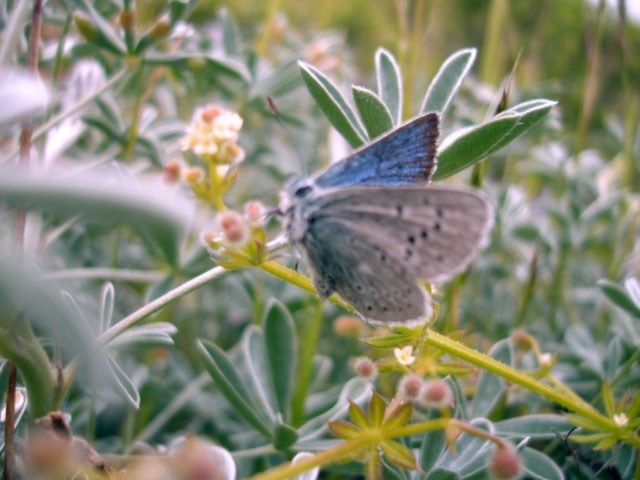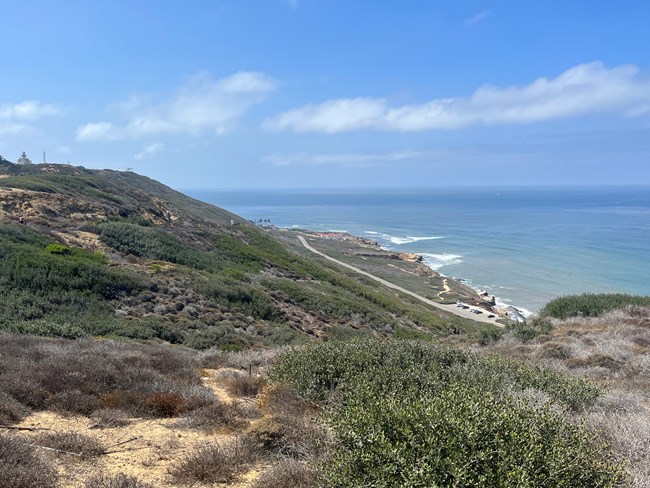Last updated: August 14, 2024
Article
Seven National Parks Collaborate on Project to Accomplish Shared Restoration Goals
Bipartisan Infrastructure Law funds will support restoration projects in seven national parks across California and Washington. The involved parks demonstrate one or more of the following project objectives: ‘keep wildlife wild’, endangered species habitat restoration, and improving visitor access and enjoyment of parks. Rachel Wolstenholme, a wildlife biologist with the National Park Service has coordinated these far-reaching and impactful projects with staff from the seven parks.
‘Keep Wildlife Wild’

NPS Photo
“We all agree that we want wildlife to be wild and we all agree that we want visitors to have safe access and a positive experience at the parks,” Wolstenholme said. “I know that visitors would never want to see an animal euthanized because it became habituated, which happens when they get free handouts, even unintended ones,” she said. When wildlife in the parks become comfortable around humans, they may approach visitors, which is dangerous for people and wildlife. The primary reasons for this is access to food or trash, whether intentional such as offering wildlife food, or unintentional such as dropping crumbs or leaving food trash behind which attracts wildlife.
In Washington state, Olympic National Park and North Cascades National Park are using Bipartisan Infrastructure Law funds to increase visitor education efforts by promoting the ‘Keep Wildlife Wild’ campaign. “In Washington parks, the park staff knew they wanted to focus on helping visitors manage their food and trash.” Wolstenholme said.
The campaign ensures consistent messaging across parks to encourage responsible and positive visitor experiences. According to Wolstenholme, many visitors go to multiple parks; therefore, it is important that they be exposed to the same positive message that is focused on prevention. Educational signs attached to tables at campsites and picnic areas show visitors how to secure their food and trash from wildlife. As part of this project, parks encourage the values of keeping wildlife wild. “All seven project parks embrace the “keep wildlife wild” approach in their visitor education, in their campgrounds, and their picnic areas,” she said.
Endangered Species Habitat Protection

NPS Photo
Bipartisan Infrastructure Law funds will also support the protection of endangered species, while ensuring sustainable recreation. One such species, the Mission blue butterfly, is a federally endangered species under the Endangered Species Act (ESA) in California’s Golden Gate National Recreation Area. “The coastal grassland habitat that the species depends upon is diminishing due to urban development, lack of prescribed burns, and the encroachment of invasive species,” Wolstenholme said. “In addition, habitat degradation is exacerbated by off-trail mountain bike use and hikers, which can damage vegetation, such lupine plants that are a critical host plant to the Mission blue butterfly.” To reduce human impacts to the endangered species, thimble eye fences were installed, scrub vegetation was removed, and native grasses were planted to promote recovery of the local butterfly habitats.
Similarly in California, Pinnacles National Park is conducting riparian restoration to protect the Federally threatened California red-legged frog. “This project helps ensure the protection of California red-legged frogs in Pinnacles by restoring streamside habitat and stabilizing banks along a mile of stream running through the park’s heavily used campground,” said Wolstenholme. In these areas, streamside habitat has been impacted from overuse from visitors who left established trails and campsites, resulting in degraded slopes above the water where the frogs reproduce.
Meanwhile, in Cabrillo National Monument, restoration is being conducted to protect the endangered, federally listed plant species, Shaw’s agave. In addition, an eroded and unsafe section of trail in Channel Islands National Park was stabilized, seeded with native plant seeds, and rehabilitated using jute matting, a biodegradable material used for erosion control. Additional restoration of the trail, including the clearing of rocks and maintaining drainage features, has since taken place. Follow-up invasive plant removal, stabilization, and native plant seeding will occur in spring 2024.
Improving Visitor Access and Enjoyment of Parks

NPS / Taro Katayama
Another project objective is being achieved through trail restoration in Golden Gate National Recreation Area, Point Reyes National Seashore, and Channel Islands National Park by repairing 13 popular trails and two trail corridors. “National parks are really well-loved and sometimes trails become overused, unstable, and eroded, which is unsafe for visitors,” Wolstenholme explained.
In many cases, trails can be restored simply by helping visitors understand the importance of using designated trails. Eliminating social trails and using signs to redirect visitors along rerouted trails are some of the ways these parks are accomplishing restoration. Social trails occur when visitors diverge from an established trail which then creates traffic in areas that, over time, can cause unstable trails and habitat degradation. “Social trails cause more and more off-trail exploration and usage, which leads to soil compaction, erosion, and the prevention of native plant growth,” Wolstenholme said.
Another impact of off-trail exploration is the spread of invasive species since people may inadvertently carried invasive plant seeds on their clothes. Cabrillo National Monument and Channel Islands National Park both have native plant nurseries that support restoration efforts. Native seeding and planting following invasive species removal can help restore these areas and build their resistance to future invasion.
Finally, in Point Reyes National Seashore, 1,974 linear feet of wildlife-friendly fencing was installed to protect sensitive park resources. “In some cases, there’s a need for wildlife friendly fencing that helps direct and remind visitors to stay on the existing path,” Wolstenholme said. “This can also help to reduce human-wildlife conflict on trails.” Additional restoration and recovery methods included the installation of two pedestrian access gates directing visitors to accessible shoreline areas at Bull Point Trail.
Bipartisan Infrastructure Law makes History for Restoration
According to Wolstenholme, when Bipartisan Infrastructure Law funding became available, they queried different parks that were experiencing similar challenges and created a shared vision for a multi-park restoration project. While each of the seven parks address a different type of ecosystem restoration in their respective parks, they share a common goal of protecting natural and cultural resources while also enhancing visitor safety and access. This represents the breadth of the Law and the opportunities it provides for the public to better experience national parks in every state.
